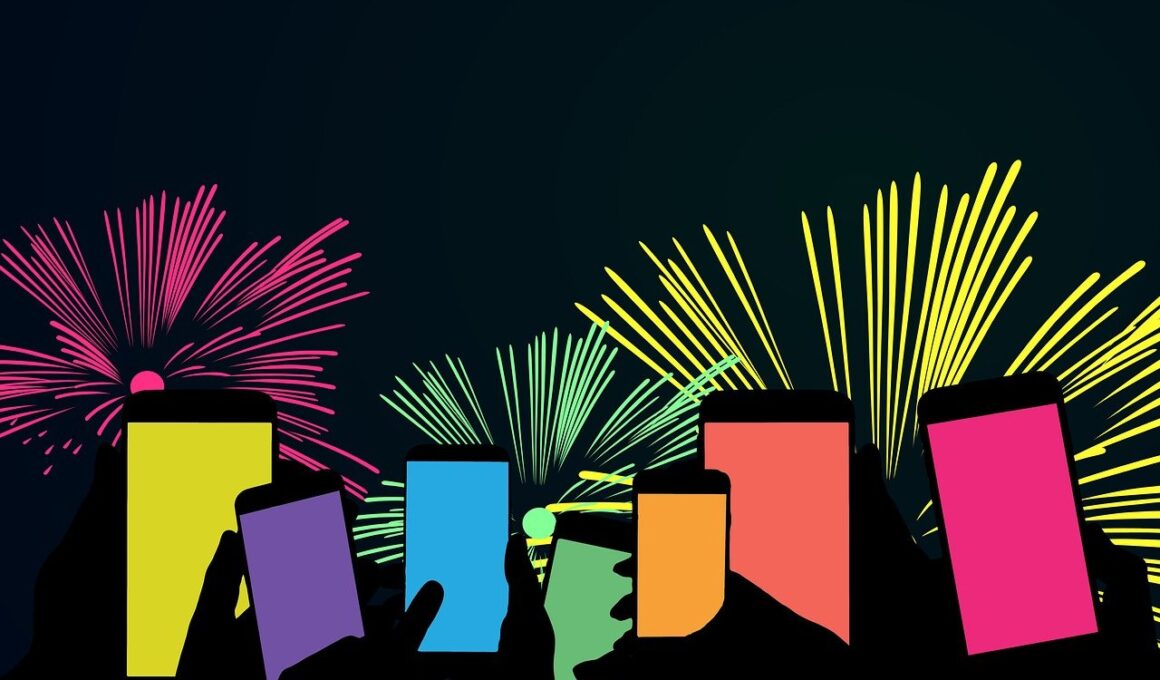Timing Matters: When to Share Optimized Event Images for Maximum Impact
When it comes to social media, sharing your event images at the right time can significantly impact engagement levels. People tend to respond differently based on when they look at their feeds. Analyze your target audience’s online behavior, including their preferred platforms such as Facebook, Instagram, or Twitter. By identifying peak usage times, such as early mornings, lunch hours, and evenings, you can schedule your posts for maximum visibility. Also, consider different time zones if your event appeals to a global audience. Incorporate analytics tools to monitor audience engagement metrics to refine your approach continuously. Regularly updating your knowledge about algorithm changes on various platforms is crucial, as these can affect how widely your content spreads. Additionally, experimenting with your posting times on weekends versus weekdays can yield insightful results. Tailoring your content to align with audience habits can increase shareability and engagement rates. Thus, being deliberate about timing can create lasting impressions that encourage interaction and sharing.
Equally important as timing is the quality of event images you share on social media. High-resolution images with proper formatting will draw more attention than blurry or poorly composed alternatives. Use tools and software that allow you to optimize your images for online visibility. Understanding the ideal dimensions for each platform is crucial, as some may require specific image ratios. For example, Instagram often favors square images, while other platforms may work better with landscape formats. This variance means your images should be versatile and ready to adapt. Start by selecting the best photos from your event and utilizing editing software to enhance colors and lighting. You should also consider including graphic overlays like event logos or crucial information to make your images stand out. Don’t underestimate the value of captions or hashtags, as these can help further the reach of your posts. Summarizing key highlights from the event can also engage viewers. The combination of timing and quality can ultimately ensure your content reaches the audience in the best possible manner.
Engaging Your Audience
Engagement is the backbone of effective social media sharing. Crafting compelling posts that accompany your event images is essential in attracting attention. Instead of simple captions, consider asking questions or prompting the audience to share their experiences related to the event. This can spark conversations and interactions that broaden your audience base. Additionally, be sure to tag relevant participants, sponsors, and speakers associated with the event. This tagging not only alerts them to your post but can also increase the likelihood of shares within their own networks, thereby amplifying your reach. Utilizing stories or live segments can enhance your engagement strategy. Real-time posts capture the excitement of the moment and draw followers in. Instagram and Facebook Live can be particularly effective tools for capitalizing on immediate interest, allowing real-time interaction and engagement. Once your event has concluded, think about creating a recap or highlight reel using images and short clips. This recap can be shared in the days following, maintaining visibility and interest in discussions related to your event.
Another strategy for maximizing the impact of your event images is to create thematic content that resonates with your audience. Consider developing diverse images that cater to various interests within your audience. Think beyond just photographs from the event—infographics summarizing key points, quotes from speakers, or action shots of attendees can engage different demographics within your audience. This multifaceted approach can elevate your brand presence. By sharing visuals that speak to various aspects of the event, you can reach broader levels of engagement. Additionally, curating user-generated content can also be quite effective. Encourage event attendees to share their own images and tag your account. Highlighting these contributions not only fosters community but also legitimizes your event’s impact. Consider incorporating contests or giveaways, where participants have to share their event experiences to win. These tactics could increase user involvement and foster organic shares. Each of these strategies can lead to elevated visibility, ensuring your event remains in the conversation long after it has ended.
Monitoring and Analyzing Engagements
Post-event, monitoring and analyzing engagement metrics is vital for understanding how your strategies worked. Utilize insights from social media analytics tools to evaluate which images and posts performed well. Look for patterns in engagement—likes, shares, comments, and click-through rates—to identify what resonated most with your audience. This helps in informing future strategies and adjustments. Take note of the best-performing times and formats for your event images. Adjusting how and when you share content based on these insights can create significant advantages for future events. Furthermore, consider the demographic details of your audience that interacted with your posts. Understanding who is engaging can lead to more targeted marketing for your next event. Plan to follow up with surveys or feedback forms to learn more about the audience’s perceptions ahead. Gaining this kind of insight could be incredibly valuable for future engagements and optimizing social media efforts. Remember that measuring success is not just about numbers, but also about building stronger relationships with your audience.
Furthermore, the art of storytelling can dramatically enhance how you share event images on social media. People are drawn to narratives that convey emotion, experiences, or transformations. Create a story around certain images to engage your audience’s interest. Each photo shared after the event can represent a chapter in the overall account of the event, revealing what made it special. Use captions to articulate the story behind the images. Highlight poignant moments like keynote speeches, unscripted audience reactions, or even behind-the-scenes experiences revealing the effort that went into organizing the event. Leveraging different storytelling formats like Instagram Stories or Facebook albums can diversify how your audience consumes the content. Multimedia presentations or short videos can also encapsulate an event’s essence in ways still images cannot. Engaging storytelling beckons audiences back for more and can lead to ongoing discussions on social media. This strategy can maintain the event’s visibility long after it has ended and contributes positively to your branding efforts.
Best Practices for Future Events
Lastly, consolidate your lessons learned into a plan for future events. Establish specific guidelines tailored to your audience preferences, optimal posting times, and proven effective formats. Consider maintaining a library of optimized images and shareable content that can be accessed and reused for promoting future gatherings. Additionally, keep regular assessment cycles where you evaluate your social media strategies. Regular updates and training sessions can help the team stay informed about industry trends and evolving social media landscapes. Incorporating trends such as reel content or short-form videos can keep your audience engaged with fresh formats. Extend your reach by collaborating with influencers or organizations within your niche, who can help amplify engagement. Lastly, maintaining an open line for audience feedback can provide critical insights applicable to both image optimization and post-event analysis. Gathering diverse perspectives can help enhance your approach to image sharing around events and contribute positively to ongoing growth and improvement within your social media strategies. With a solid plan in place, your future events can achieve ongoing success by optimizing social media sharing.
With the right approach to optimizing event images for social media, you can significantly enhance the reach and impact of your engagement. Focusing on optimal timing, high-quality imagery, compelling storytelling, and regular analysis will equip you with the necessary tools to succeed. Experiment with different strategies aligned with your audience and refine them based on engagement metrics. Over time, identify best practices that suit your specific needs; this way, you can develop a customized approach to content sharing that works effectively for your objectives. In a fast-paced digital landscape, staying adaptable and informed will help you gain a competitive edge. Also, the relationship between brand and audience can flourish through effective image sharing strategies that entice participation and connection. Ultimately, combining these elements is key to ensuring your optimized event images resonate with your audience, making a lasting impact and encouraging them to engage long after the event has concluded. The goal of social media sharing is not just to promote but to create a community around your events that thrives beyond a simple online interaction. Consistency, creativity, and connection should always guide your efforts in this dynamic field.


